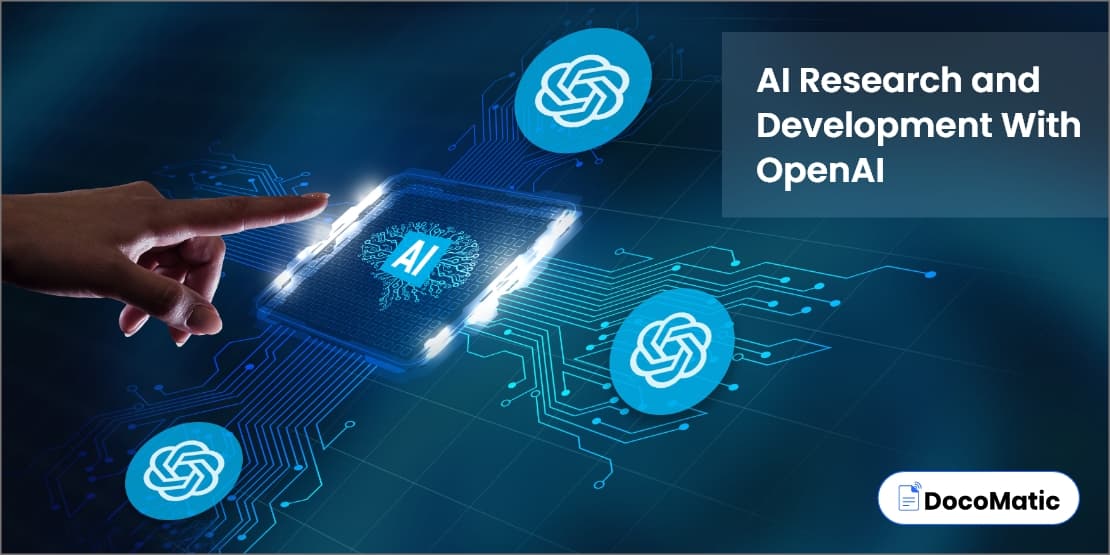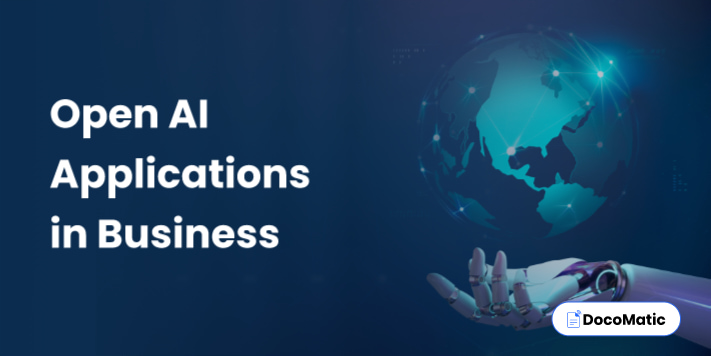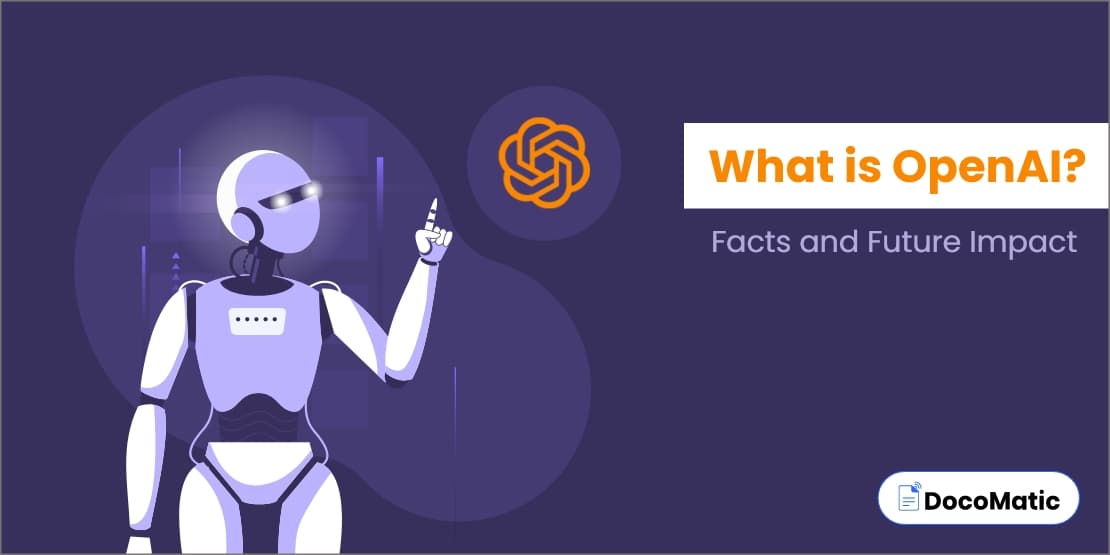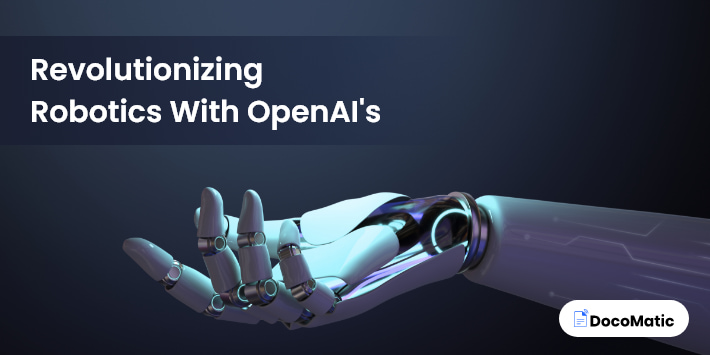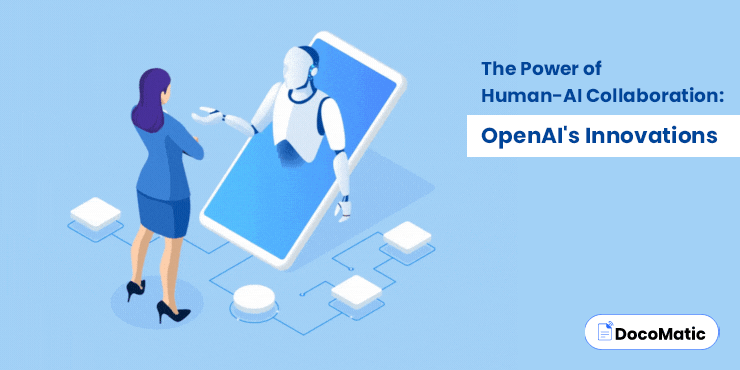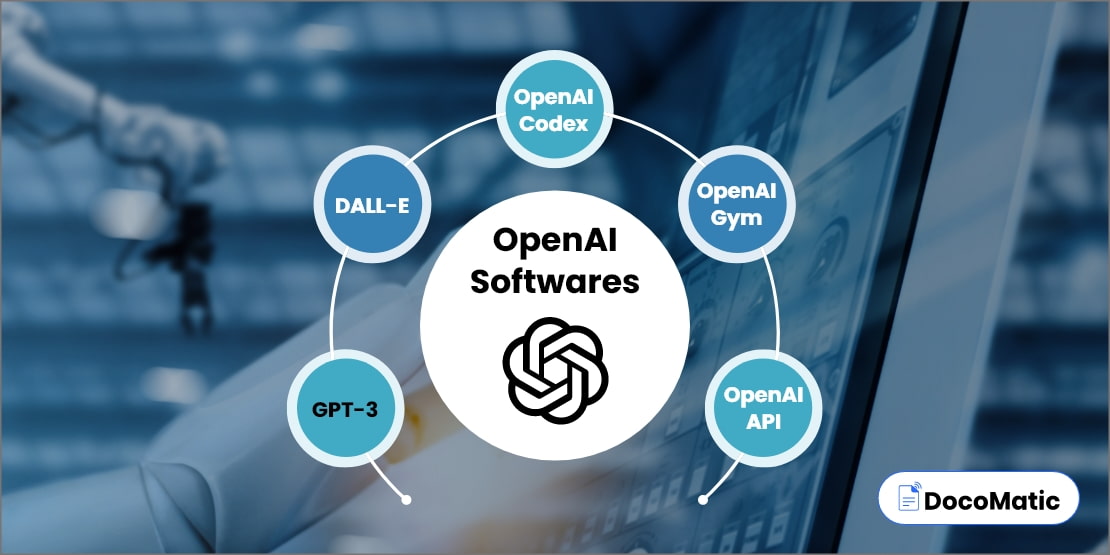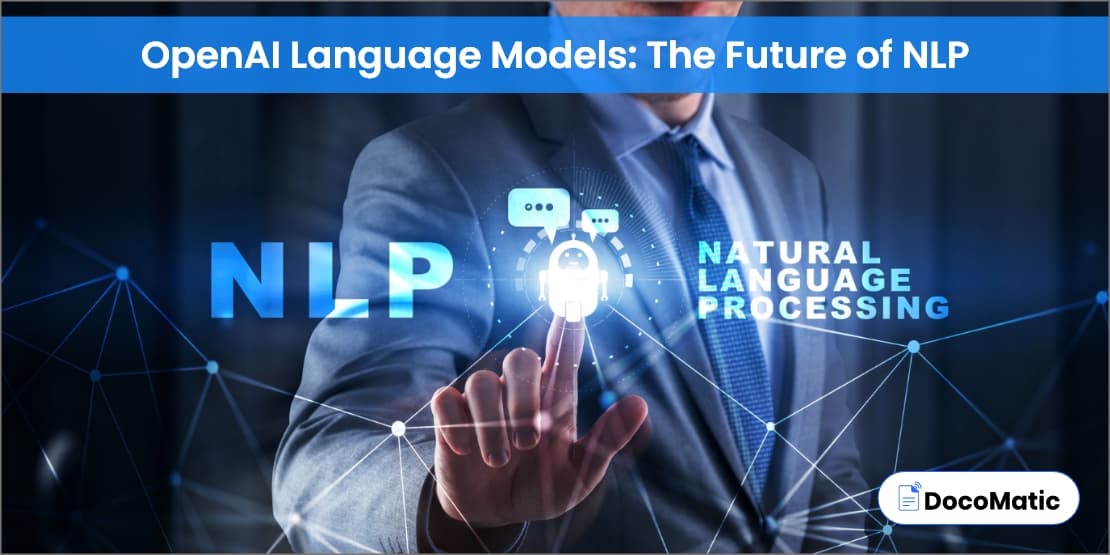Artificial intelligence (AI) has transformed industries tremendously and has become an essential tool for businesses and organizations to thrive globally. According to a report by GrandViewResearch, the global market for AI is forecasted to expand at a compound annual growth rate (CAGR) of 37.3% from 2023 to 2030.
However, the reason for the growth is AI research and development, particularly by organizations like OpenAI. OpenAI is a research organization that aims to ensure that general intelligence benefits everyone.
In this blog, we will explore some of open AI’s latest breakthroughs in AI research and development and the challenges researchers face. In addition, the OpenAI approach to the analysis and their advanced research AI systems.
Table of Content
What is the Latest AI Research Breakthrough by OpenAI?
ChatGPT
The latest research breakthrough by OpenAI is ChatGPT. It was first introduced in June 2020 and instantly gained attention because of its ability to generate human-like responses. Moreover, it has surpassed the capabilities of previous language models and made significant development in the field of artificial intelligence and natural language processing.
Moreover, it was recognized by famous AI researchers and features in multiple social media platforms and media for its language models. So, what is ChatGPT? As the name suggested, it is a chatbot that provides instant answers to questions. This technology is powered by machine learning algorithms that have been trained on a massive amount of text data from online.
However, it is more than just a chatbot. Its natural language processing capabilities make it a valuable tool for businesses and researchers alike. Researchers can use ChatGPT to generate new concepts and analyze complex concepts, while businesses can leverage its language processing abilities to acquire beneficial insights about their customers and optimize their processes.
In addition, ChatGPT is constantly evolving and aiming to improve research and development efforts. Hence, with continued innovation, ChatGPT has the potential to transform the way we interact and communicate with machines.
7 Challenges Faced by AI Researchers
Here are the 7 challenges faced by AI researchers using AI technologies and deep learning algorithms:
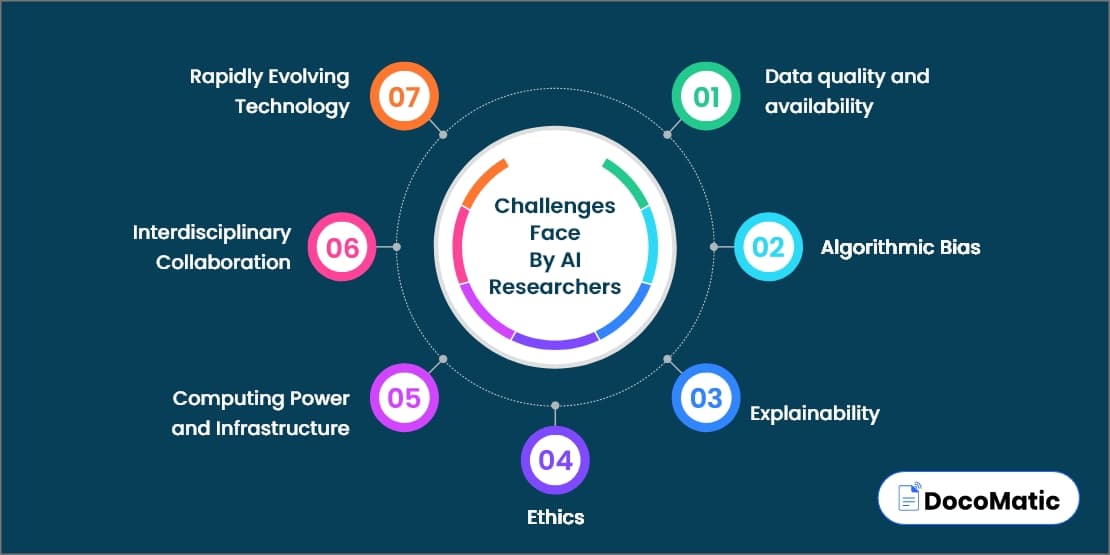
1. Data quality and availability
AI researchers face a challenge when they have to train large amounts of data to learn patterns. The data must have high quality, and thus, poor quality data led to a negative impact. Moreover, you will be unable to make correct and accurate decisions or predictions.
Moreover, in a few cases, data might simply not exist or be hard to obtain. In such a situation, it becomes challenging for AI researchers to represent and create well-rounded models, such as generative AI models. Thus, it is crucial to serve quality data and check its availability.
2. Algorithmic bias
AI functions based on how you train them and the way their data is used. Here, bias arises because of the design of algorithms. As a result, it becomes unfair and turns out a discriminatory outcome.
It occurs particularly when AI systems are used in areas such as credit scoring, hiring, or criminal justice. The researcher must ensure and identify algorithms that are not biased and provide positive outcomes.
3. Lack of explainability
As AI systems have become more powerful and challenging, numerous AI researchers face difficulty to understand and lack of explainability. Moreover, it becomes challenging for them to come up with a decision or produce certain results. Also, it is hard to identify and address errors in performing tasks.
As a result, it can lead to serious consequences, especially in applications with significant impact. To address this challenge, researchers are exploring ways to improve the transparency and interpretability of AI models.
4. Ethical problems
Another challenge faced by AI researchers are the ethical considerations that arise while developing and deploying AI systems. artificial intelligence and machine learning have great potential to benefit society but can provide incorrect data because of algorithms.
Moreover, AI researchers are trying to solve and bring a comprehensive approach to AI ethics. AI technologies should be used with clear guidelines and be responsible for the development of AI. as well as mechanisms for ensuring accountability and transparency.
5. Computing power and infrastructure
AI systems are becoming more powerful and complex. Moreover, several promising AI techniques, such as deep learning, need massive amounts of computing power and energy. Also, it is expensive and unsustainable for the environment.
In addition, numerous AI applications require specialized infrastructure and hardware that are challenging to maintain as well as acquire. It becomes even more difficult when the resources are limited, and AI researchers search for particular results.
6. Interdisciplinary collaboration
Artificial Intelligence is a highly interdisciplinary field, including computer science, neuroscience, psychology, and mathematics. And many researchers face challenges in collaborating across these disciplines.
As a result, it is complex with unfamiliar language or while using large language models. To address this challenge, AI researchers are working on developing AI to have more interdisciplinary approaches.
7. Rapidly evolving technology
One of the ongoing challenges AI researchers are facing is the rapidly evolving nature of the technology. AI development is rising, and new AI techniques and tools are being developed at a pace that makes it difficult to keep up with the latest advances.
In addition, the use of AI is constantly transforming as new applications and use cases emerge, and existing ones evolve. Thus, AI researchers must stay up-to-date to focus on code generation and handle complex situations with advancement.
List of OpenAI’s Approach to AI Research
OpenAI is a research organization dedicated to advancing AI in a secure and beneficial manner. Here are some of OpenAI’s approaches to AI research:
Fundamental research
OpenAI focuses on fundamental research in artificial intelligence. The organization has a high priority on developing new techniques and theories that can be applied across a wide range of domains. However, the approach is quite essential for advancement in the field of AI.
As it allows researchers to develop existing knowledge and push the boundaries of what is possible with Artificial Intelligence. Moreover, by investing in fundamental research, OpenAI is able to explore new models, such as unsupervised learning, reinforcement learning, and generative models, to improve human lives.
Large-scale computing
One of the approaches of OpenAI is their use of large-scale computing infrastructure. OpenAI has access to some of the most powerful computing resources globally. Computing allows us to process vast amounts of data and run complex AI models quickly and efficiently.
This includes advanced hardware, such as GPUs and TPUs, that can be used to train large-scale AI models and distributed computing clusters to manage challenges occurring in artificial intelligence. For instance, training large language models and advanced robotics.
Open source
OpenAI is committed to open-sourcing its research and open data to advance the field of Artificial Intelligence. By open-sourcing, several AI tools and libraries can release large datasets to the public, allowing researchers to bring some innovation to their work.
Also, OpenAI has released multiple open-source software libraries, including Gym for reinforcement learning, PyBullet for robotics, and Transformers for natural language processing. As a result, OpenAI helps to grow and create more inclusive artificial intelligence.
Collaboration
OpenAI has already become a renowned name in the field of artificial intelligence. Therefore, several researchers and organizations collaborate with OpenAI to use advanced AI technologies. It is because of its approach toward AI research and development.
It has collaborated with leading academic institutions, industry partners, and other research organizations to bring together diverse perspectives and knowledge to tackle challenging research problems. Moreover, by collaborating with others, OpenAI aims to leverage the expertise of others and accelerate progress in artificial intelligence.
Safety and ethics
The Artificial Intelligence and deployed company ensured that AI is developed in a secure and ethical manner. It recognizes the importance of AI and will provide an outcome that is beneficial for all. OpenAI also has several initiatives aimed at promoting AI safety.
Moreover, they have established an ethics and governance team to oversee their research. They also develop tools and techniques for making AI more transparent and explainable, which can help to build trust and faith in AI among the public.
Education and outreach
The profit organization believes in the importance of educating people about artificial intelligence and its potential. Moreover, it aims to promote AI development and its use to the technical and non-technical public. OpenAI wants to impact lives with the use of AI.
As a result, it includes engaging in outreach and advocacy efforts to promote a better understanding of artificial intelligence and its implications. Moreover, OpenAI conducts educational programs, such as school programs for AI, an event for AI researchers, and an advanced course on reinforcement learning.
Advancements in AI Research Made by OpenAI
1. GPT-3
OpenAI has developed GPT-3 (Generative Pre-trained Transformer 3. It is one of the largest and most powerful language models in the world. GPT-3 generates human-like text and performs a wide range of natural language processing tasks, such as translation, answering questions, and summarization.
The model has been used in a variety of applications, including chatbots, virtual assistants, and content generation. The chatbots reduce research time and provide almost accurate answers in a minute. It is applicable in multiple industries, such as healthcare and education.
2. DALL-E
Another impactful development by OpenAI is DALL-E. It is a neural network that can generate images from textual descriptions. DALL-E has the potential to revolutionize the way we create unique and realistic images of objects, animals, and textual input.
The technology has been trained on a vast dataset of images and captions with instant response and can create prompt information using its capabilities. It is a great advancement possibility for artists, designers, and people who want to explore the creative field.
3. Robotics
Another innovation in artificial intelligence research by OpenAi is robotics. It is a branch of technology and engineering that deals with the design and operations of robots. They have created a robotic hand that can learn to manipulate objects through trial and error.
Robotics has a wide range of applications and industries, from manufacturing to logistics. Recent advancements in robotics have allowed machines to operate alongside humans more seamlessly, with the potential to change the way people work. Also, Robotics technology continues to evolve, such as machine learning.
4. Safety and governance
OpenAI has also made considerable improvements in the area of AI safety and governance. They have developed tools and frameworks to ensure that AI is developed and deployed in a secure and ethical way. Also, it includes the development of the OpenAI Safety Gym, a suite of environments developed to examine and benchmark AI algorithms for safety and robustness.
FAQs
OpenAI prime focuses on a wide range of AI research areas, including natural language processing, robotics, computer vision, and reinforcement learning. The organization is also committed to advancing the safety and ethics of AI.
In OpenAI’s research and development efforts, open-source software plays a vital role by allowing the sharing of essential work with the broader artificial intelligence community. Open AI has developed open-source libraries and tools, such as TensorFlow.
OpenAI collaborates with other businesses and researchers on a regular basis, both through informal collaborations and formal partnerships. The community also conducts conferences and workshops to bring together experts from a variety of fields to advance the state of AI research.
Cloud adoption, the development of advanced language models, computer vision algorithms, and the development of artificial intelligence is the exciting developments in AI research that can be expected in the future.
Conclusion
In the last few years, OpenAI has witnessed significant breakthroughs and is beneficial for artificial intelligence research and development. It has provided advancement in language models, robotics, and numerous technologies. Also, it has the potential to revolutionize multiple industries using its language processing.
However, with any new technologies, there are also a few challenges that need to be addressed to provide seamless systems. Thus, as AI continues to evolve, OpenAI is poised to lead innovative solutions and shape the future of technology.
